
The ADI Stallion is a US civil utility aircraft that first flew in July 1994. It is marketed in kit form for homebuilding by Aircraft Designs Inc.
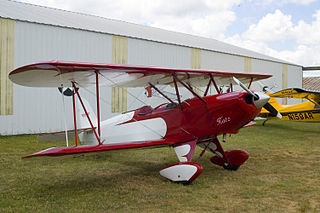
The Hatz CB-1 is a 1960s American light biplane designed by John Hatz for amateur construction. The Hatz Classic variant is supplied in kit form by Makelan Corp of New Braunfels, Texas, while the other variants are available as plans only.

The Nord Aviation 3202 was a 1950s French military trainer aircraft designed and built by Nord Aviation to meet a French Army requirement for a two-seat basic trainer, as a replacement for the biplane Stampe SV.4. Altogether, 101 examples were built, with the first flying on 17 April 1957.
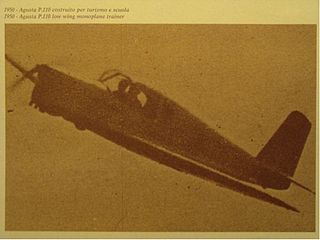
The Agusta CP-110, also known as CVV P.110 or Politecnico P.110, was a prototype Italian four-seat light aircraft first flown in 1951 that failed to attract interest from either civil or military operators, although it was evaluated by the Aeronautica Militare. Originally designed and built by the CVV -, production aircraft were to have been built by Agusta, but for lack of interest.

The Luton L.A.4 Minor was a 1930s British single-seat high-wing ultra-light aircraft. The prototype was built by the Luton Aircraft Limited, and design plans were later adapted and copies sold for homebuilding.
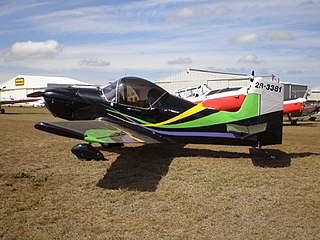
The Corby CJ-1 Starlet is a single seat, amateur-built aeroplane designed in the 1960s by Australian aeronautical engineer John Corby.

The Brügger MB-1, MB-2 and MB-3 Colibri is a family of small sports aircraft designed in Switzerland in the 1960s and 1970s for amateur construction.

The Piel CP-30 Emeraude is an aircraft designed in France in the mid-1950s and widely built both by factories and homebuilders.
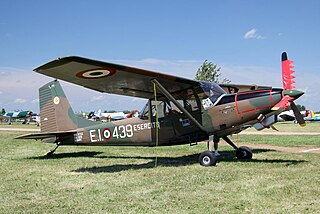
The SIAI-Marchetti SM.1019 is an Italian STOL liaison monoplane built by SIAI-Marchetti for the Italian Army, and based on the Cessna O-1 Bird Dog.

The Focke-Wulf S 2 was a trainer aircraft built in Germany in the late 1920s. It was a conventional parasol-wing monoplane with fixed tailskid undercarriage. The pilot and instructor sat side by side in an open cockpit. Only a single example was built.
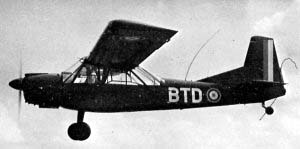
The Nord 3400 Norbarbe was a French two-seat observation and casualty-evacuation aircraft built by Nord Aviation for the French Army Light Aviation.

The Wassmer WA-80 Piranha is a French two-seat low-wing cabin monoplane trainer designed and built by Société Wassmer. Based on the same construction as the company's WA-50 four-seater, the WA-80 was a scaled down version. The prototype, registered F-WVKR, first flew in November 1975 powered by a 100 hp Rolls-Royce Continental O-200 engine. Wassmer appointed a receiver and suspended production in 1977 after 25 had been built.

The Piel CP.70 Beryl is a French twin-seat, single-engine sport aircraft designed by Claude Piel. It was first flown in France in the 1960s and marketed for amateur construction.
The Piel CP.90 Pinocchio II was a single-seat, single-engine aerobatic sport aircraft developed in France and marketed for homebuilding. The design was based on that of Piel's Emeraude and was unrelated to Piel's first design named Pinocchio, the CP.10 and indirectly to the second, the CP.20. It was a cantilever, low-wing monoplane of conventional design with an enclosed cockpit and fixed, tailwheel undercarriage. Construction was of wood throughout.

The Piel CP.60 Diamant is a single-engine light aircraft designed in France in the 1960s and marketed for home building.
The Piel CP.500 was a light aircraft of unusual configuration designed in France in the 1970s with the intention of marketing it for homebuilding. This did not transpire, however, and no prototype was actually built. It was a tandem wing design, somewhat reminiscent of the Mignet Pou-du-Ciel but considerably larger. Also, unlike the Pou-du-Ciel's unusual control system, the CP.500's pitch and roll control was to come from more conventional elevons mounted on the rear wing. The rear wing was also to carry endplate-style fins and rudders. Twin engines were to be mounted in push-pull fashion at the nose and tail ends of the fuselage, with the aircraft capable of single-engine operation in case of emergency. Two seats were to be provided at the front of the fully enclosed cabin, with a bench seat for three passengers behind them, plus an optional seat for a sixth occupant behind this. The undercarriage was to be of fixed, tricycle configuration. Construction was originally planned to be of wood, with engine cowlings and wingtips of composite construction. However, as development progressed, Piel considered metal as the main construction material.
The Rans S-16 Shekari is an American single-engined, two-seat, low-wing, aerobatic monoplane designed by Randy Schlitter, built by Rans Inc and sold as a kit for amateur construction.

The Stoddard-Hamilton Glasair III is an American two-seat dual-control monoplane designed and built by Stoddard-Hamilton Aircraft of Arlington, Washington as an addition to the Glasair range of aircraft for amateur construction. Glasair I, II and III assets were purchased by Advanced Aero Components in September, 2017.
The Humbert La Moto Du Ciel is a French ultralight aircraft, designed and produced by Humbert Aviation of Ramonchamp, introduced in the mid-1980s. The aircraft is supplied as a complete ready-to-fly-aircraft.

The Phoenix Air Phoenix is a Czech shoulder-wing, two-seat motor glider, designed and produced by Phoenix Air and provided as a complete ready-to-fly aircraft.
















